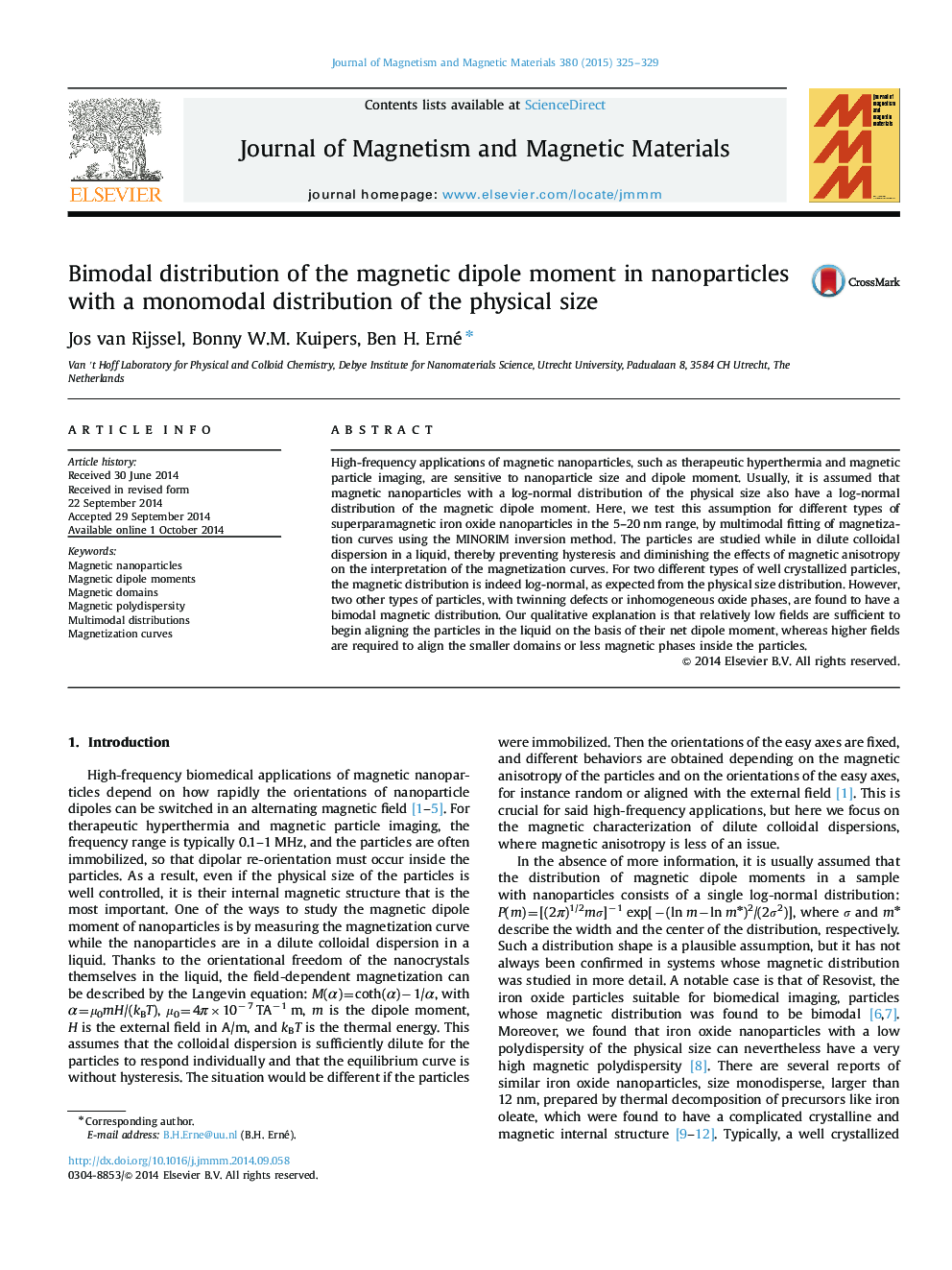| Article ID | Journal | Published Year | Pages | File Type |
|---|---|---|---|---|
| 1798903 | Journal of Magnetism and Magnetic Materials | 2015 | 5 Pages |
•Multimodal fits of dilute ferrofluids reveal when the particles are multidomain.•No a priori shape of the distribution is assumed by the MINORIM inversion method.•Well crystallized particles have log-normal TEM and magnetic size distributions.•Defective particles can combine a monomodal size and a bimodal dipole moment.
High-frequency applications of magnetic nanoparticles, such as therapeutic hyperthermia and magnetic particle imaging, are sensitive to nanoparticle size and dipole moment. Usually, it is assumed that magnetic nanoparticles with a log-normal distribution of the physical size also have a log-normal distribution of the magnetic dipole moment. Here, we test this assumption for different types of superparamagnetic iron oxide nanoparticles in the 5–20 nm range, by multimodal fitting of magnetization curves using the MINORIM inversion method. The particles are studied while in dilute colloidal dispersion in a liquid, thereby preventing hysteresis and diminishing the effects of magnetic anisotropy on the interpretation of the magnetization curves. For two different types of well crystallized particles, the magnetic distribution is indeed log-normal, as expected from the physical size distribution. However, two other types of particles, with twinning defects or inhomogeneous oxide phases, are found to have a bimodal magnetic distribution. Our qualitative explanation is that relatively low fields are sufficient to begin aligning the particles in the liquid on the basis of their net dipole moment, whereas higher fields are required to align the smaller domains or less magnetic phases inside the particles.
Graphical abstractFigure optionsDownload full-size imageDownload as PowerPoint slide
